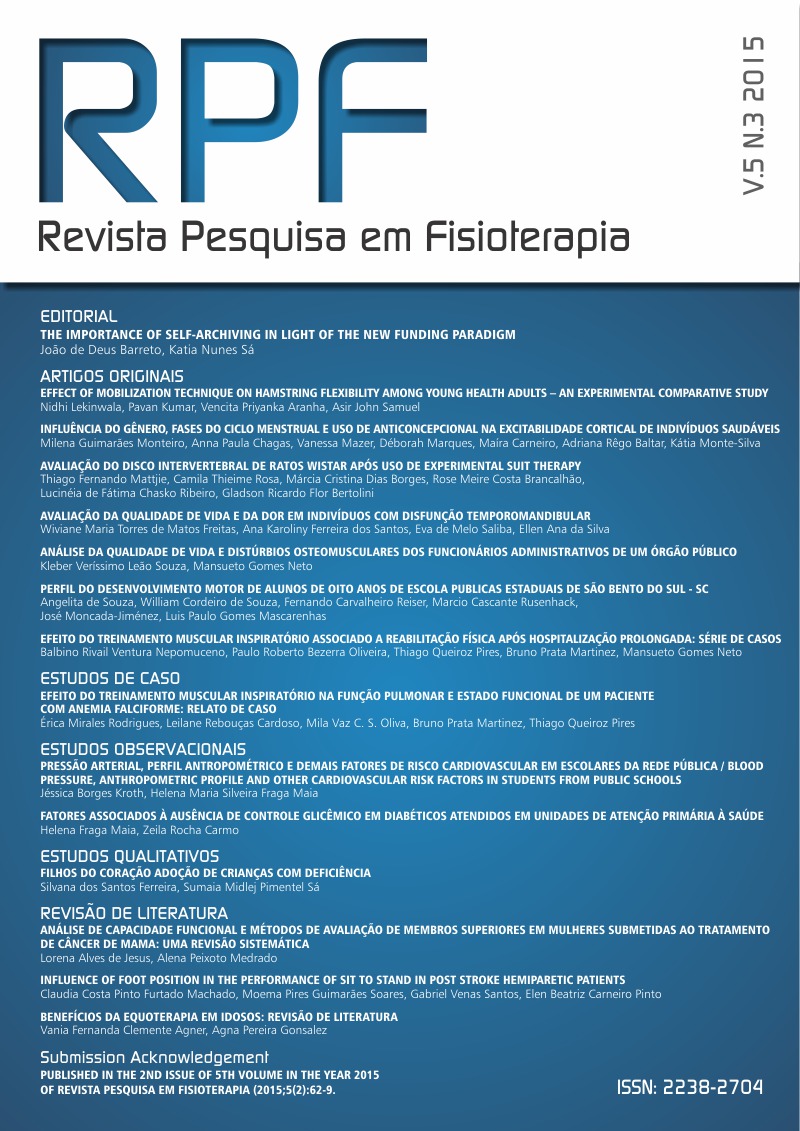INFLUENCE OF GENDER, MENSTRUAL CYCLE AND CONTRACEPTIVE USE ON CORTICAL EXCITABILITY OF HEALTHY SUBJECTS
DOI:
https://doi.org/10.17267/2238-2704rpf.v5i3.749Keywords:
Cortical excitability, Gender, Menstrual cycleAbstract
Introduction: Transcranial Magnetic Stimulation (TMS) is a non-invasive technique of cortical stimulation that is employed to investigate the pathophysiology of neurological disorders. In order to use the TMS as tool for neurodiagnosis, it is important to investigate whether factors non-related to disease may be associated with changes in physiology assessed by technique. Objective: to verify whether gender, menstrual cycle phases and contraceptive use influence on measures of cortical excitability. Methods: By cross-sectional study, 114 healthy volunteers were divided into the following groups: men; women of reproductive age (follicular and luteal phase) and menopausal women. TMS was used to identify the resting motor threshold (rMT) of the first dorsal interosseous muscle which was used as an indicator of the cortical excitability level. Results: Oneway ANOVA revealed that rMTs in menopausal women and in men are greater than women of reproductive age. When comparing men to women at different stages of the menstrual cycle, this difference was seen only when m in rMTs of women who use or not contraceptives. Conclusion: it was found that cortical excitability is influenced by hormonal changes that occur in healthy individuals. The use of the cortical excitability variance as a measure for clinical neurodiagnosis should consider these variations non-related to the disease to avoid misdiagnosis.



